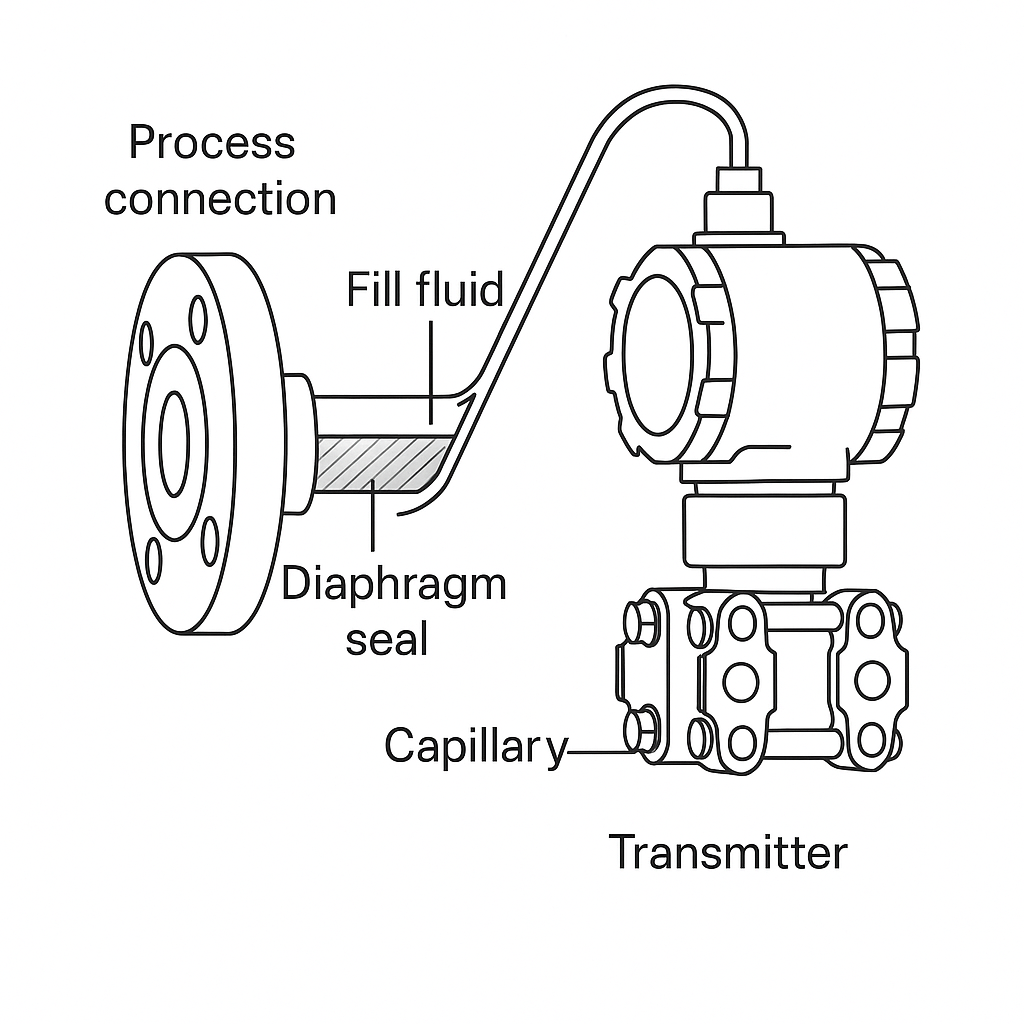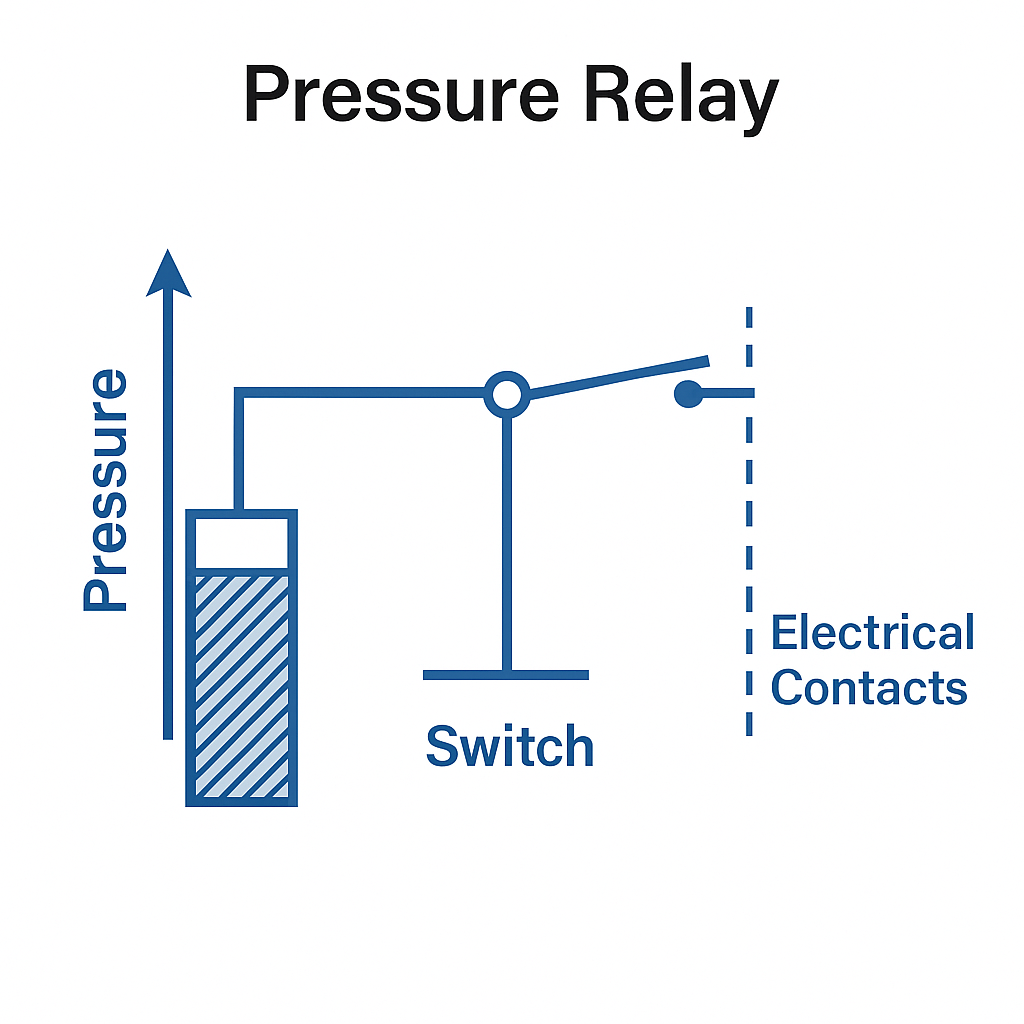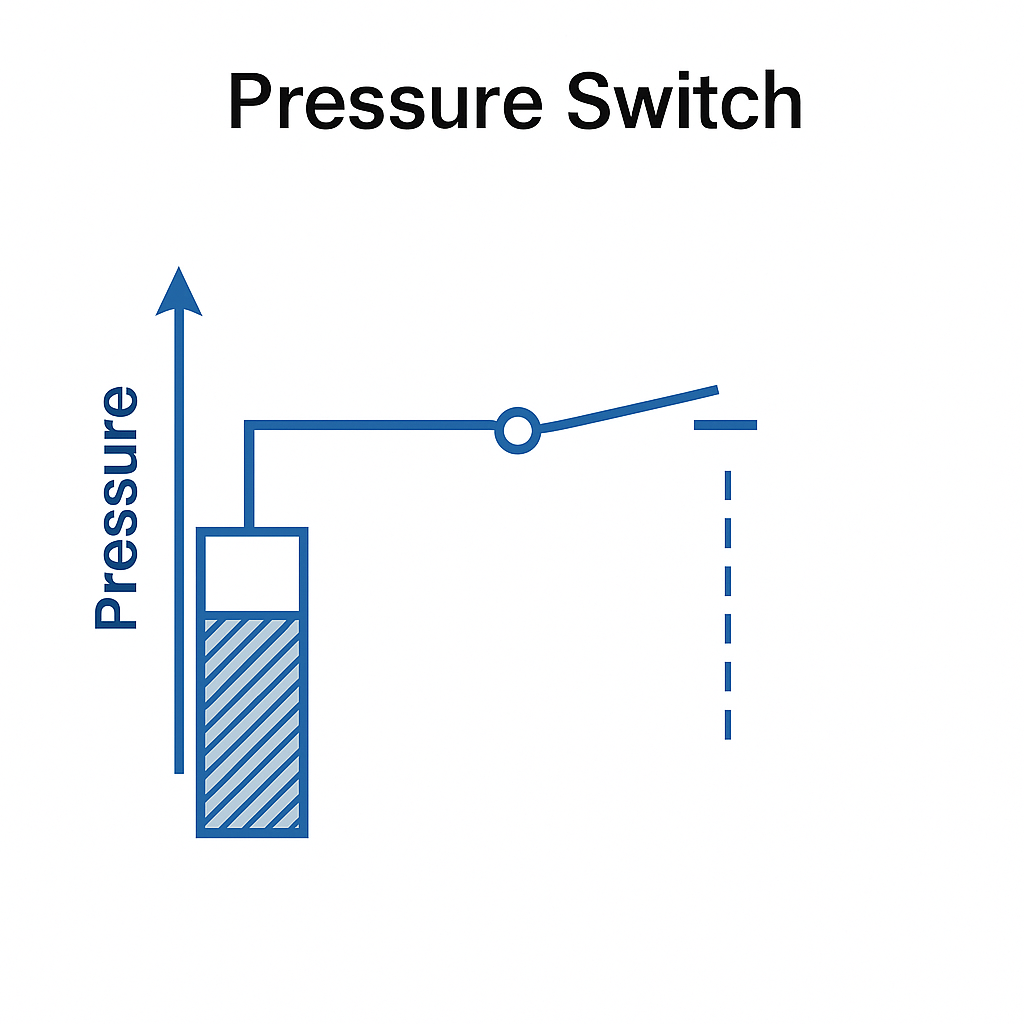1. Pressure Sensor (Transducer)
Working Principle: Detects a pressure signal and converts it into a usable electrical signal (analog or digital).
Applications: Widely used in industrial automation systems such as water resources, electric power, petrochemicals, aerospace, railways, and smart buildings.
Features:
Provides continuous output (e.g., 4–20 mA, 0–10 V, RS485).
Interfaces with PLC, DCS, or data acquisition systems.
Suitable for precise process control and real-time monitoring.

2. Pressure Relay
Working Principle: A hydraulic-to-electrical conversion component that uses fluid pressure to open or close electrical contacts.
Applications: In hydraulic or pneumatic systems, when the pressure reaches the preset value, it sends an electrical signal to trigger components (such as solenoids, motors, clutches).
Features:
Provides electrical switching signals for sequential operations and safety protection.
Often used to unload pressure, change direction, stop systems, or protect equipment.
Offers more contact outputs or control nodes compared to a simple switch.

3. Pressure Switch
Working Principle: A combined pressure–electrical switch that automatically connects or disconnects a circuit based on preset pressure values.
Applications: Commonly used for simple on/off control tasks, such as starting or stopping pumps and compressors.
Features:
Outputs binary (ON/OFF) signals.
Simple structure and lower cost.
Mainly used for straightforward control logic.

📊 Comparison Table
| Category | Output Signal | Control Type | Typical Applications | Key Features |
|---|---|---|---|---|
| Pressure Sensor | Analog/Digital (continuous) | Continuous measurement & monitoring | Process automation, data acquisition | High accuracy, programmable, real-time |
| Pressure Relay | Switch signal (multiple contacts possible) | Sequential / interlock control | Hydraulic/pneumatic systems, safety protection | More outputs and complex logic |
| Pressure Switch | Switch signal (ON/OFF) | Simple open/close control | Pump and compressor start/stop | Low cost, simple structure, basic function |
👉 In short:
A pressure sensor measures and transmits continuous signals.
A pressure switch provides basic ON/OFF control.
A pressure relay is more advanced than a switch, offering multiple contacts and more flexible control logic.
